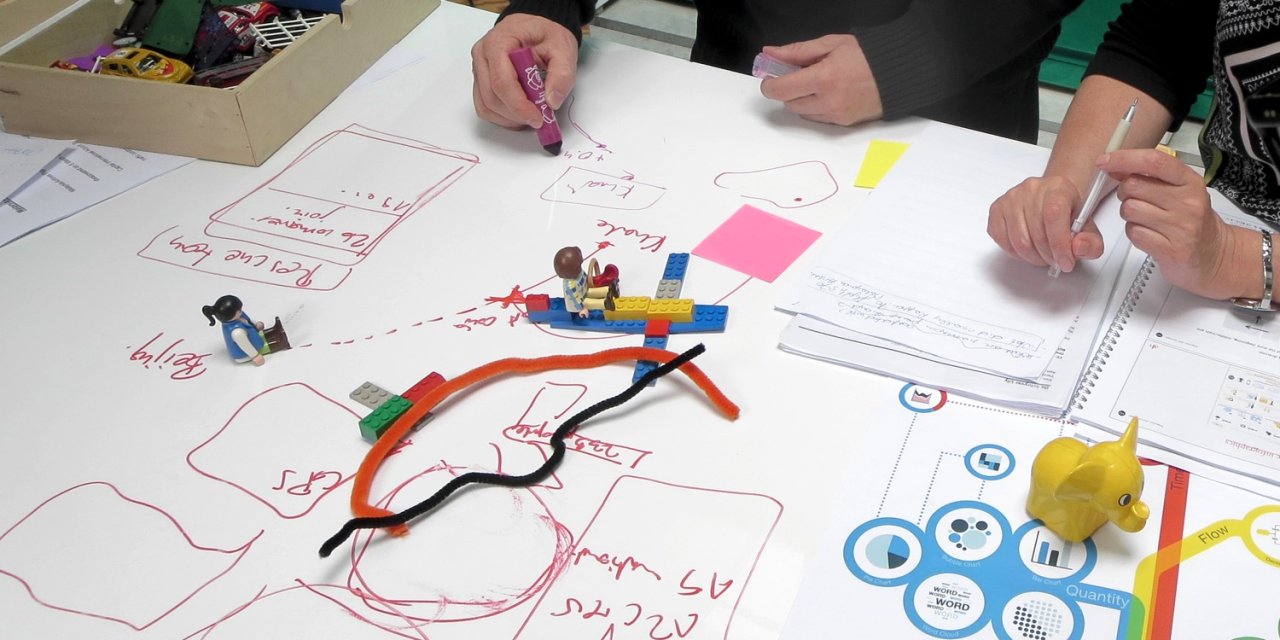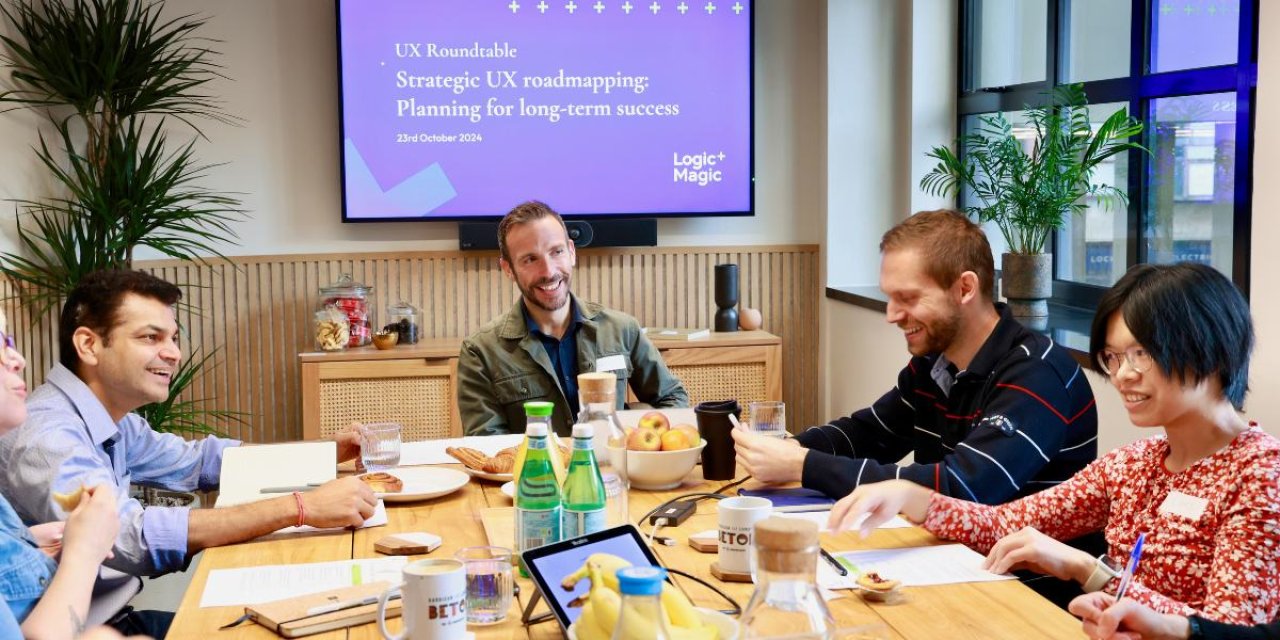Picture a website or app that you love and ask yourself why you love it. Perhaps the design, how it made your task easy or that it made you feel good. That’s the beauty of good user experience and it didn’t happen by accident. The people behind it have taken time to really understand the people their digital product serves and have designed it around their wants, needs and motivations.
The companies that provide incredible online experiences like Amazon, Air B&B and GOV.uk have set the bar and customers expect all their experiences to be just as slick. Leading brands across the world are working to constantly raise the quality of customer experiences with many others merely playing catch up.
As organisations increasingly recognise the link between exceptional UX and sustained success, it becomes imperative for executives at the highest echelons to champion the cause. That doesn’t mean they need to understand the ins and outs of UX or even care about the craft but it does mean that we as UX professionals need to show the top table how we can help with their goals and challenges and move the conversation or belief from just making things look good with no tangible results. In early October we spent 90 minutes in conversation with Alex Leonard, Anwar Abdulhaqq, Christian Fradet, Ciara Davey, David Alexander, Dominika Kopec, Emma Horrell, George Russell, Jen Burg, Lori Ho, Martin Wright, Matthew Davison and Nikhil Amble to examine how UX leaders and teams can engage with and enthuse the C-Suite about UX.
This blog summarises the ten key themes that emerged from that therapy session conversation.
The coalface
“Get your senior colleagues face to face with your users”
Many senior colleagues move further away from customers as their careers progress, they may have once been on the front-line supporting customers but nowadays find themselves leading teams, crunching numbers, making big decisions and strategising.
How can UX leaders bring senior colleagues to the coalface?
The winners of great customer experience are obsessed by customers and it’s hard to look further than Jeff Bezos, when CEO at Amazon, one of the most notable things he had was an active email that customers could email. If a customer had issues with their product, or the service they received, they could email jeff@amazon.com directly alongside working in support and complaints from time to time.
Laxman Narasimhan, the new Chief Exec of Starbucks plans to don the green apron and work in cafes once a month to get an immersive experience into understanding employees and customers and what a better way to tell the rest of the workforce that customer insights and understanding are vitally important to the success of the company.
As UX professionals there is huge value in showing the C-Suite how users are being treated digitally and on other self-serve platforms. Video-based usability testing highlights reels are particularly effective to bring users into the room and in front of senior colleagues, improving decision making, customer outcomes and ultimately the bottom line.
Collaborate by doing
“Involve senior colleagues in the process before the final, shiny report is written.”
Just like your old maths teacher used to say – show your working out. One of our attendee’s shared that methods such as design sprints offer a means by which senior input can be garnered efficiently and effectively as part of the process ensuring their buy-in from the start, reducing the chances of resistance or push back later in the project because they have been involved in the journey, understand the rationale and will have been part of the solution.
Prioritise comms
“Use the finites attention you garner from the C-suite wisely and precisely.”
Getting time with the C-Suite isn’t always easy and peaking their interest is even trickier and so when we do manage to get time with them we must apply the same methods as we do to our users – understand what matters to them, shape the story around that and do it succinctly.
Senior people and stakeholders are busy and by telling stories and evoking emotion they are 20 times more likely to remember a fact[1]. Using journey maps or story boarding can be helpful artefacts in presenting facts through stories.
One of our leaders shared a story where getting in front of senior management within their organisation was like gold dust. So, the team set up a war room near the offices of senior people which caught their attention walking by and ultimately their interest leading to increased curiosity in the work of the UX team and contribution.
Know your audience
“Understand their pressures, speak their language.”
The music is nothing if the audience is deaf.
No-one except you and your team care about UX (gulp), we can talk about heuristic evaluations and personas until we’re blue in the face but the truth is no one else cares, this is simultaneously humbling and liberating; once we as UX professionals can accept it we can start the journey of making a difference.
Leave your UX acronyms, terms and labels at the door and talk about the outcomes the audience is trying to achieve and translate work into what they care about.
A prophet in your own land
“An external report or agency involvement can be a catalyst for positive change.”
There is no denying that there’s significant value in gaining the perspective of experts sitting in a different seat. By the mere fact of being external, they can run research, analyse findings and discern recommendations from a different angle to an internal team and may even uncover more pain points with increased honesty amongst customers. The agency’s report, once based on solid process and empirical research, can be a powerful agent of change.
Visualise and prototype
“Embrace data visualisation and make your ideas tangible.”
Show, don’t tell. The human brain thinks and memorises in pictures. Many of the world’s leading digital companies insist that their people across functions sketch their ideas to make it easy for stakeholders to imagine the vision – bringing it to life with drawings, sketches and prototypes.
The group spoke about the power of prototypes and putting them into the hands of senior teams to interact with solutions in a way that’s familiar to them.
Tell stories
“Bring your ideas and suggestions to life with effective story arcs.”
Storytelling is the most powerful way to put ideas into the world. One contributor shared an example of talking about the impact of accessibility on a deaf student and how soundly that resonated with decision-makers. Much more powerful than data, or graphs, or reporting on an accessibility compliance checklist.
Be culturally aware
“Culture is a shared way of doing something.”
Some leaders are straight-shooters and expect UX professionals to talk direct. Others are relational and will expect a softer communication style. Some boards value UX and its associated processes. Others are at the start of their customer-centricity journey. The effective UX leader is sensitive to the cultural expectations of the C-suite and communicates accordingly.
Pick your battles
“Bring colleagues with you and protect internal relationships as you champion the user.”
Battles are first won or lost in the mind. The most straightforward way to get someone to do what you want them to do is to get them to want to do it. It’s the same when you want to persuade them of an idea. Delegates chatted on standing firm on immovable values while remaining flexible and playing the long game when driving a customer-centred change agenda.
Metrics
“Get into the habit of regularly and consistently communicating design performance.”
Peppered into the conversation throughout was the importance of metrics in communicating value to the C-Suite. But not design or UX metrics; rather commercial or board metrics that differ from organisation to organisation. UX leaders need to understand how a board measures organisational performance, and build a bridge from those metrics to the metrics of design performance. One delegate summarised it perfectly:
“If you can share positively trending numbers, you are proving your value.”
Sources
[1] Harrison, K. (n.d.). A Good Presentation Is About Data And Story. [online] Forbes. Available at: https://www.forbes.com/sites/kateharrison/2015/01/20/a-good-presentation-is-about-data-and-story/.





.png)

